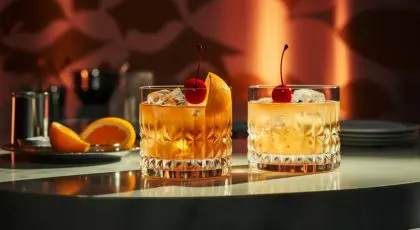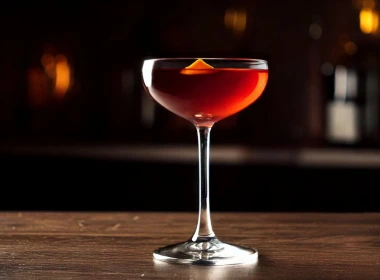Armagnac vs Cognac: Understanding the Differences Between Two Iconic French Brandies
Jump to:
In the heart of Western France, the regions of Cognac and Armagnac are celebrated for producing some of the world’s finest grape brandies. Situated close together—Cognac along the Atlantic coast, just north of Bordeaux, and Armagnac a scenic hour-and-a-half drive to the south—these gorgeous regions craft two distinct styles of brandy. Let’s delve into the rich history, grape varieties, soil types, techniques, and aging processes that define each of these unique liquors.
History of cognac vs. Armagnac
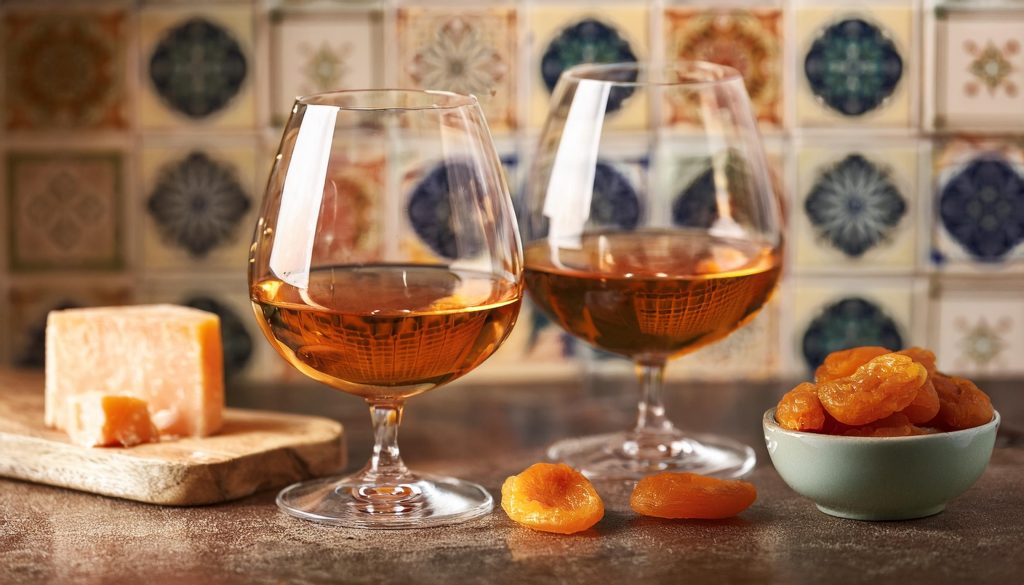
The rich histories of Armagnac and cognac trace back centuries, each steeped in tradition and distinct regional identities.
Cognac has its roots in the 16th century, when Dutch traders discovered the region’s high-quality grapes and began distilling it into brandy for export. The town of Cognac, located near the Charente River, became a centre for this booming trade. By the 18th century, cognac had gained international fame, leading to strict regulations that ensured quality and authenticity, solidifying its reputation as a premium liquor.
Armagnac’s history is even older, with references dating back to the 14th century. It was originally produced as a medicinal tonic, incorporating the region’s local grapes.
Unlike cognac, Armagnac is traditionally distilled using a continuous pot still, also known as an Armagnac alembic still. This type of still is unique to Armagnac production and combines elements of both traditional pot stills and column stills. This approach enhances its robust flavor, and the spirit soon gained recognition for its unique character, especially among local enthusiasts.
As the two regions flourished, a friendly rivalry developed, with each brandy carving out its own niche in the global market. Cognac, with its elegance and refinement, appealed to a more mainstream audience, while Armagnac, known for its boldness and depth, found favour among folks seeking a more complex tasting experience.
Today, both brandies hold a cherished place in the hearts of enthusiasts worldwide, celebrated for their rich histories, artisanal craftsmanship, and the stories they tell with every sip.
Also see: 10 Simple Cognac Cocktails to Impress Your Friends
Production process comparison
While both cognac and Armagnac hail from Western France, their journeys from grape to glass has some key differences. Let’s discover how these two liquors are crafted, from the grapes that are used to the distinctive regions that shape their flavours.
Distillation

The differences between Armagnac and cognac start right at the distillation process. Cognac undergoes double distillation in pot stills, a process that smooths and refines the liquor, giving it that polished and elegant character.
Armagnac, on the other hand, typically uses a continuous distillation method, which results in a more rustic, bold flavour. This single distillation method allows for a greater retention of flavour compounds, paving the way for a brandy that has earthy depth and character in each sip.
Types of grapes used

Another key difference lies in the grapes used. Ugni Blanc grapes are predominantly used in the is cognac-making process. This varietal is prized for its high acidity and subtle flavour, perfect for making an elegant, balanced brandy.
By contrast, Armagnac’s blend includes grapes like Baco Blanc and Folle Blanche, which adds to its complexity and boldness. This variation in grape selection directly influences the distinct flavour profiles of each brandy, resulting in cognac’s smoother, lighter style versus Armagnac’s richer, more robust expression.
Learn more: The Best Grand Marnier Cocktails & Dessert Recipes
Regions of production

The physical regions of cognac and Armagnac are as influential as the production methods. Cognac is produced in the region north of Bordeaux, closer to the Atlantic Ocean. Its terroir is defined by chalky soil, which helps to retain moisture and encourages the growth of vines that produce bright, crisp grapes.
Armagnac, located further south and inland, benefits from a more varied landscape with clay, sand, and limestone soils, each contributing to the bold, earthy notes found in its brandy. The terroir’s unique influence not only yields different flavours but tells a story in each sip, revealing the character of the soil where the grapes were grown.
Get schooled: The Vintage Cocktail Comeback (Why Old School Cocktails are Trending)
Aging process and classifications

The Armagnac vs cognac aging processes also set the scene for distinct flavours, and time spent in oak barrels shapes these brandies in very different ways.
Aging is crucial to both liquors, as each is stored in oak barrels that slowly infuse the spirit with rich, layered flavours. Cognac tends to be aged in Limousin oak, known for its mild tannins, which add smoothness and a hint of vanilla to the final product.
Armagnac, however, often goes into local Monlezun oak casks, which imparts spicier, more robust flavours. The longer the spirit ages, the more complex the taste becomes, as the wood works its magic over time.
When it comes to classification tiers, both cognac and Armagnac use familiar designations like VS (Very Special), VSOP (Very Superior Old Pale), and XO (Extra Old). However, the age minimums differ slightly, with cognac adhering to a stricter aging regimen. For example, an XO cognac must be aged at least 10 years, while Armagnac XO typically starts at around 6 years.
Armagnac vs. cognac taste

When it comes to comparing Armagnac vs cognac taste, each spirit brings its own distinct personality to the glass. Let’s break down the key differences:
Cognac taste
- Light, refined, and elegant
- Common tasting notes: pear, apple, citrus, vanilla, and soft caramel
- Often described as smooth and easy to sip, with a polished finish
- Double distillation creates a cleaner, more balanced profile, highlighting its fruity and floral characteristics
- Ideal for those who enjoy a lighter, more approachable brandy experience
Armagnac taste
- Bold, earthy, and rustic
- Common tasting notes: dried fruits like figs and prunes, oak, spice, leather, and hints of tobacco
- Known for its robust and intense flavours, making it a complex, fuller-bodied liquor
- Single distillation process retains more of the grape’s natural character, delivering a deeper, more concentrated flavour
- Appeals to those who prefer a more adventurous and layered brandy experience
Overall contrast
- Cognac offers a more refined and smooth experience with a light, fruity sweetness
- Armagnac presents a richer, bolder profile, with more earthy, spicy, and oaky undertones
- Cognac is often enjoyed for its elegance and subtlety, while Armagnac is loved for its complexity and fuller flavours
How to enjoy cognac and Armagnac
Sipping brandy neat (top tips)
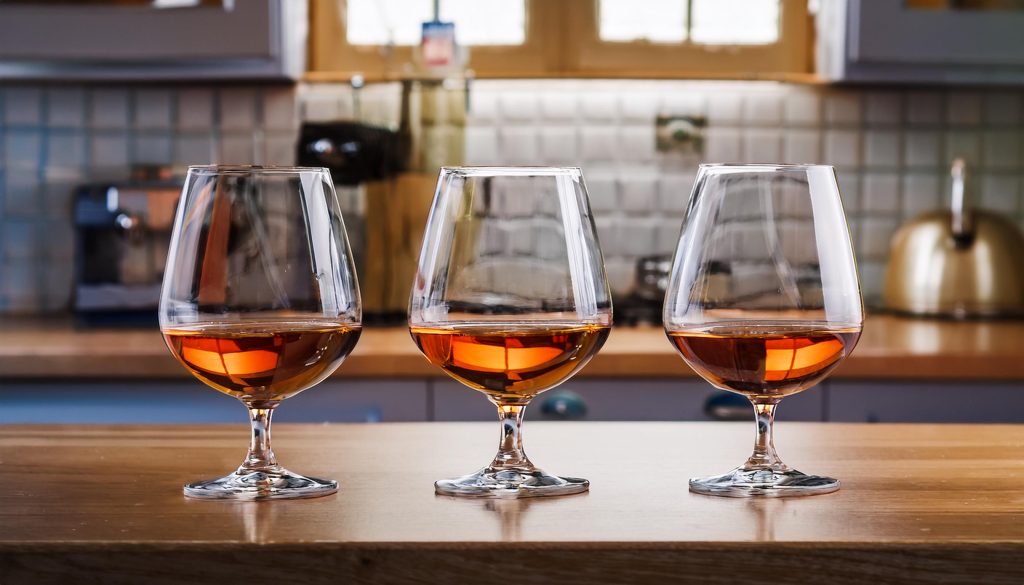
- Use a tulip-shaped or snifter glass to concentrate the aromas and enhance the tasting experience.
- Enjoy at room temperature; brandy releases its full range of flavours when served slightly warmer.
- Cradle the bowl of the glass in your hand to gently warm the brandy, which helps release its aromas.
- Swirl the brandy gently, then bring the glass to your nose. Inhale deeply to enjoy the rich bouquet of scents.
- Take small sips to allow the brandy to coat your palate, savouring the complex flavours.
- Pay attention to the aftertaste, noting how the flavours evolve and linger.
- Between sips, a sip of water can help reset your palate, allowing you to fully appreciate the brandy’s depth and complexity.
Cognac cocktails
The Gala

A bright and refreshing blend of cognac, lemon juice, and sparkling water, The Gala is the perfect cocktail for those who love a light, citrus-forward drink. The smoothness of the cognac shines through, balanced by the tartness of lemon and the fizz of soda. Try it with a platter of fresh oysters or a citrus-glazed chicken salad to complement the zesty flavours.
Read next: 14 Cocktails with Orange Liqueur That Zest the Best
French Twist

The French Twist combines cognac with a tangy grapefruit twist and a touch of sparkling water, yielding a drink that’s crisp and uplifting. The complex notes of cognac blend seamlessly with the subtle bitterness of grapefruit for a refreshing cocktail. Enjoy it with grilled shrimp or avocado toast; the flavours of these dishes will play well with the citrusy bitterness.
Citrus Spritz

A lively take on the traditional spritz, the Citrus Spritz mixes cognac with orange juice and soda for a bubbly, fruit-filled experience. Light and refreshing, it’s a perfect summer sipper. Pair it with bruschetta or goat cheese crostini, so the fresh, bright flavours can enhance the cocktail’s citrus notes.
Zest with the best: Grand Marnier vs Cointreau
Sidecar
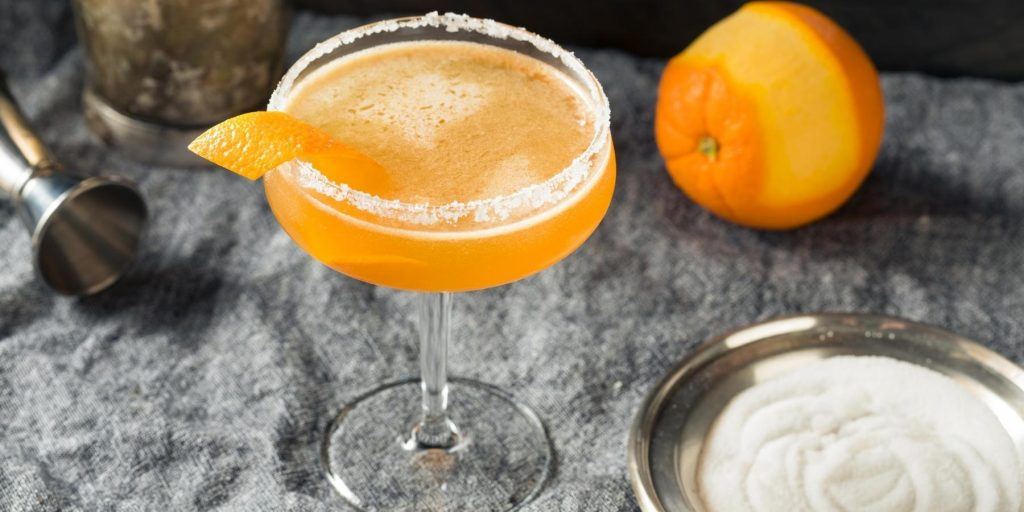
The classic Sidecar offers a rich balance of cognac, lemon juice, and orange liqueur. It’s a sophisticated cocktail with a perfect harmony between sweet and tart, allowing for a luxurious sipping experience. Savour it with duck pâté or truffle fries; the richness of these dishes complements the elegant flavours of the Sidecar.
French 75

Effervescent and elegant, the French 75 combines cognac with lemon juice and Champagne for a celebratory drink that’s both bright and bubbly. The citrus and sparkling wine elevate the rich notes of the cognac. Pair this cocktail with smoked salmon or small chicken-filled crêpes for a light, classy snack that matches the cocktail’s sophistication.
Armagnac cocktails
Intercontinental

The Intercontinental cocktail offers a complex, bittersweet profile with a smooth, velvety finish, ideal for those who enjoy deep, rich flavours. To make it, stir 30 ml Armagnac, 20 ml Amaro Averna, and 15 ml cherry liqueur with ice. Strain into a chilled glass and garnish with a twist of lemon zest for a touch of brightness. Pair the complex, bittersweet flavours of the Intercontinental with a charred lamb skewer or grilled portobello mushrooms.
Claudine

The Claudine cocktail offers a refined mix of herbal, citrus, and subtly sweet notes, perfect for those who appreciate well-balanced, layered flavours. To make it, stir 45 ml Armagnac brandy, 10 ml dry vermouth, 10 ml sweet vermouth, 10 ml aromatized wine, and a dash of orange bitters with ice.
Strain into a chilled glass, and garnish with a twist of orange zest for a citrusy finish. The herbal and citrus notes of the Claudine complement roasted chicken with thyme and lemon or caramelised onion tartlets.
D’Arganan

The D’Arganan cocktail combines citrusy sweetness with the light, bubbly touch of sparkling wine, yielding a bright and celebratory drink. To make it, shake 15 ml Armagnac, 15 ml Grand Marnier, and 15 ml orange juice with ice, then fine strain into a chilled glass.
Top with dry sparkling wine and garnish with a twist of lemon for a zesty finish. For a celebratory pairing with the D’Arganan’s citrusy sweetness, try serving prosciutto-wrapped melon or crab cakes with a citrus aioli.
Saz with a Sting

The Saz with a Sting cocktail comes to the party with a bold mix of spiced whiskey, herbal mint, and rich Armagnac flavours with a hint of rum in the background. To make it, rinse a chilled glass with 10 ml Appleton Estate Rum and set it aside.
Stir 30 ml Wild Turkey Rye Whiskey, 30 ml Armagnac, and 30 ml white crème de menthe with ice, then strain into the pre-rinsed glass. Garnish with a lemon twist for a citrusy accent. The bold, spiced profile of Saz with a Sting pairs well with smoked duck breast or roasted beet salad with goat cheese.
French Negroni
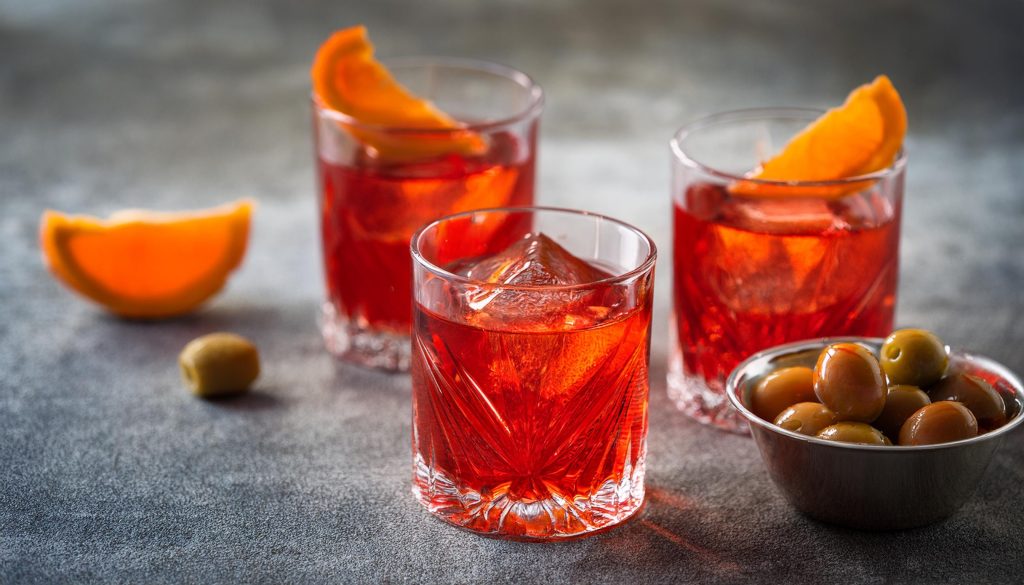
The French Negroni adds the smooth depth of Armagnac to the classic aperitivo sipper. To make one, combine 30 ml Armagnac, 30 ml Campari, and 30 ml vermouth in a tumbler. Stir gently with ice until well-chilled, then garnish with an orange peel for a bright, citrusy touch. Pair the French Negroni’s bittersweet and smooth depth with stuffed bell peppers or a grilled halloumi salad.
In summary – both cognac and Armagnac hold a wholly unique appeal. It all comes down to what kind of brandy appeals to you, and how you wish to enjoy it. Remember to tag us when you share your brandy cocktails on Instagram and sign up for our newsletter to be among the first to receive handy guides like this. Also feel free visit the Courvoisier website for more cognac insights and recipe recommendations.





